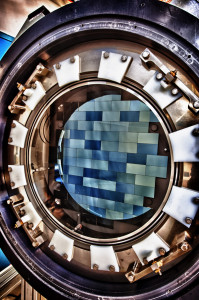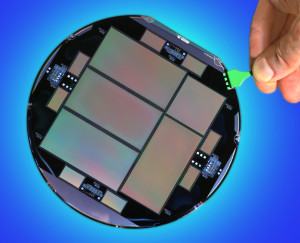Imaging detectors such as charge-coupled devices (CCDs) are primarily used for astronomical observation and x-ray imaging. Our CCDs are noted for their exceptionally high, near-infrared sensitivity and capability to capture images billions of light years away. The Berkeley Lab MicroSystems Laboratory produces scientific CCDs for imaging and spectroscopic applications in astronomy as well as for the direct detection of x-rays at the Advanced Light Source.
The 570 Mpixel Dark Energy Survey camera located at the National Optical Astronomy Observatory Cerro Tololo Inter-American Observatory utilizes 74 fully depleted CCDs that were fabricated at Teledyne DALSA Semiconductor and the MicroSystems Laboratory. Fully depleted, 16 Mpixel CCDs are also in use in the Baryon Oscillation Spectroscopic Survey (BOSS) experiment and are planned for operation at the Mid-Scale Dark Energy Spectroscopic Instrument (MS-DESI).
The Dark Energy Survey camera is located at the Cerro Tololo Inter-American Observatory that is part of the National Optical Astronomy Observatory. CTIO is located in the Andes mountains in Chile. The project is called the Dark Energy Survey.
Silicon wafer containing CCDs used in DECam.

